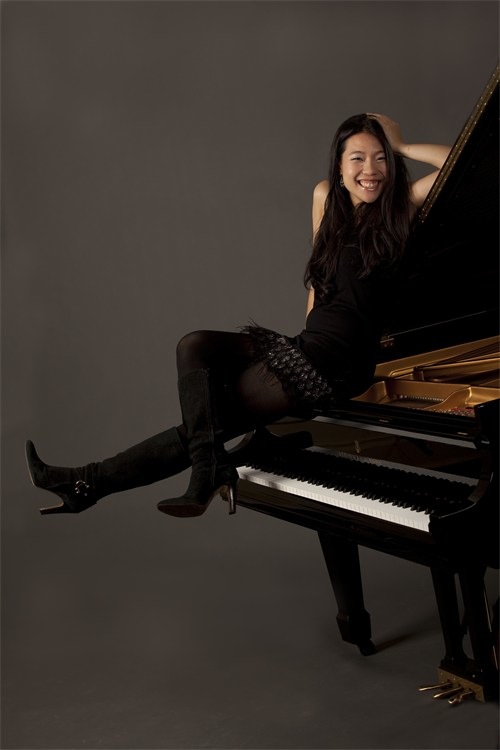Yang’s exuberant Gershwin highlights Utah Symphony’s American-Czech program

Among the extensive body of works George Gershwin wrote for both the stage and concert hall in his short life are four notable works for piano and orchestra: the Rhapsody in Blue, the Second Rhapsody, the Variations on “I Got Rhythm” and the Concerto in F.
Kevin Cole played the first three works with the Utah Symphony in November. The Concerto is F on the program this weekend, which marks the work’s first appearance on a Utah Symphony concert since 2004. Thierry Fischer was on the podium Friday night with Joyce Yang at the piano.
Yang, who has a large repertoire of works, has been a frequent guest with the Utah Symphony over the last several years. Playing to a nearly sold-out audience in Abravanel Hall, she showed her mettle as a versatile pianist giving an aptly jazzy account of Gershwin’s 1925 concerto.
The Korean-born pianist is a very musical player with the technical chops to match, both of which she displayed to the fullest Friday. Yang played up the lyricism of each of the concerto’s three movements but without sacrificing or downplaying the virtuosity in the outer movements.
Fischer once again showed that he is a wonderfully sensitive collaborator, offering Yang solid accompaniment and ensuring the balance between the piano and orchestra was always just right. The first and third movements are rhythmically vibrant and robust, and Yang played them with gestures that captured the jazzy character of the music. In the final movement Yang displayed her technical bravura with dynamic playing that emphasized the relentless drive and exuberance of the music. Fischer and Yang took the bluesy slow movement at a leisurely tempo that worked surprisingly well and allowed both the soloist and orchestra to bring delicate lyricism and finely crafted expression to the playing.
Responding to the enthusiastic applause at the end of the concerto, Yang returned onstage for an encore—Earl Wild’s florid arrangement of Gershwin’s song “The Man I Love,” which she played with feeling and nuanced expression.
Also on the program is Dvorák’s Symphony No. 8, which along with his Ninth Symphony, is one of his greatest and most popular orchestral works.
Dvorák likes to incorporate strong contrasts in thematic material, dynamics, and tempos in his music, and Fischer captured this wonderfully in his reading of the Eighth. The conductor coaxed effusive playing from the orchestra in the opening and closing movements with his broad gestures.
But at the same time he also paid attention to the lyricism that flows through these movements. Fischer handled the subtle and at times abrupt shifts in mood deftly in the slow movement, bringing out the alternately lyrical and dramatic character of the music with subtle inflections. The third movement waltz was given a light treatment that allowed the orchestra to play with fluid lines and well-crafted phrasing.
After the symphony Fischer and the orchestra surprised the audience with an encore, a vibrant and dynamic reading of Dvorák’s Slavonic Dance in C major, Op. 72, no. 7.
The concert opened with Leonard Bernstein’s Three Dance Episodes from the film On the Town.
The opening movement, “The Great Lover” was played with vigor that captured the syncopated rhythms of the music, while “Lonely Town” was given a flowing treatment that emphasized the sinewy lines of the blues-inspired music. “Times Square: 1944”—which contains the film’s best known song, “New York, New York”—was delightfully breezy and lighthearted, and featured fine solo work by Daron Bradford on alto sax.
The program will be repeated 7:30 p.m. Saturday in Abravanel Hall. utahsymphony.org; 801-355-2787.